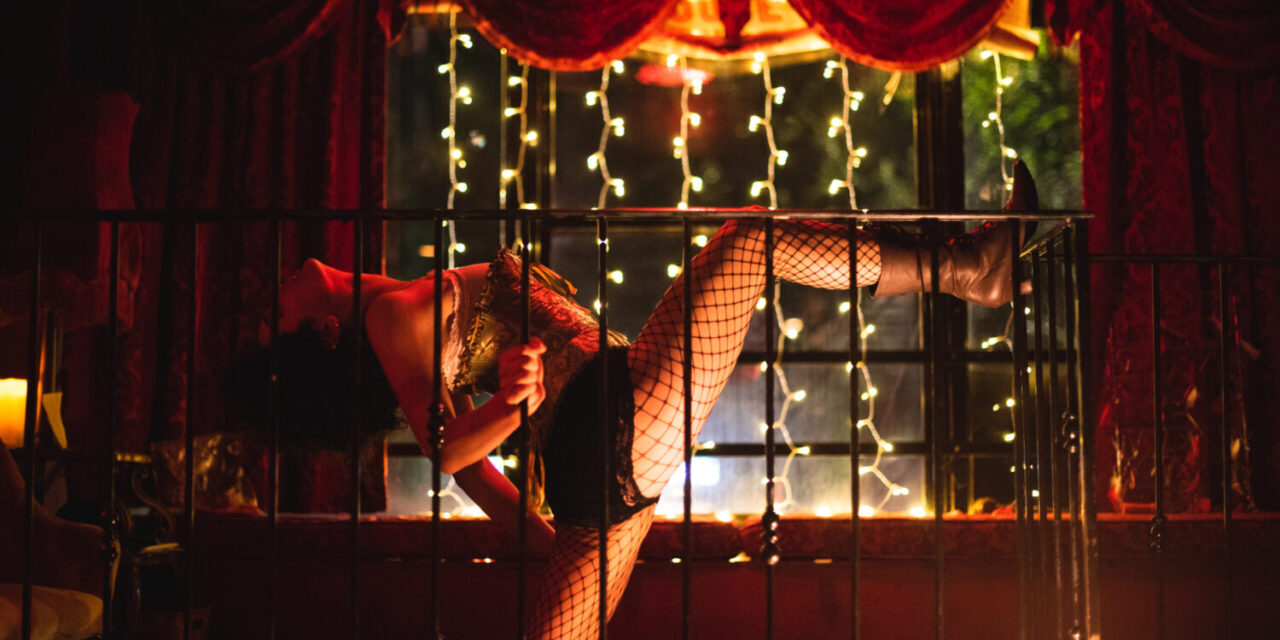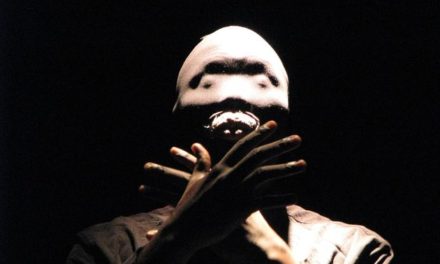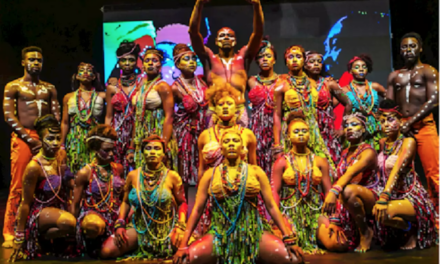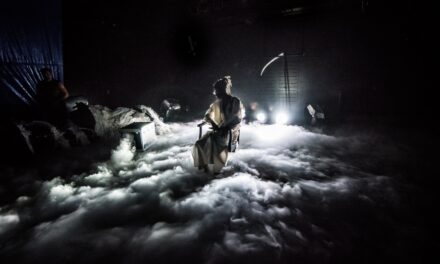To find Unmaking Toulouse-Lautrec, you will first enter through the wrong door. The production is being staged at the SoHo bar Madame X, but upstairs; go in through the main entrance and you will think, Wow! This is immersive! You’ll know you’ve found the right place when a lusty lass greets you with a hearty “Bonjour!” The bartender wears suspenders and holds a cigar, unlit, in his mouth. Then you’ll order the Jane Avril, champagne with crème de cassis, and sit down to think, what do you know about Toulouse-Lautrec? He was a commercial artist in Belle Époque France. He also painted dancers and sex workers in bright yellows, oranges and reds. He was somehow very short. After the show, you may not know that much more about him, but your visit to the cabaret is not a research trip. It’s a pleasure cruise.
Unmaking Toulouse-Lautrec was directed and conceived by Mara Lieberman, Executive Artistic Director of the Bated Breath theatre company who collectively devised the show. Committed to immersive and non-traditional theatre, Lieberman has previously adapted the lives of children’s book author Maurice Sendak, and scientist Barbara McClintock. But the spiritual godfather of this show is, I think, Sunday in the Park with George, Sondheim’s exploration of visionary pointillist George Seurat. But whereas Sunday in the Park expands over the course of two acts to thoroughly depict the conditions of Seurat’s life and work, Unmaking Toulouse-Lautrec goes for mood; what we get here is a night at the Moulin Rouge.
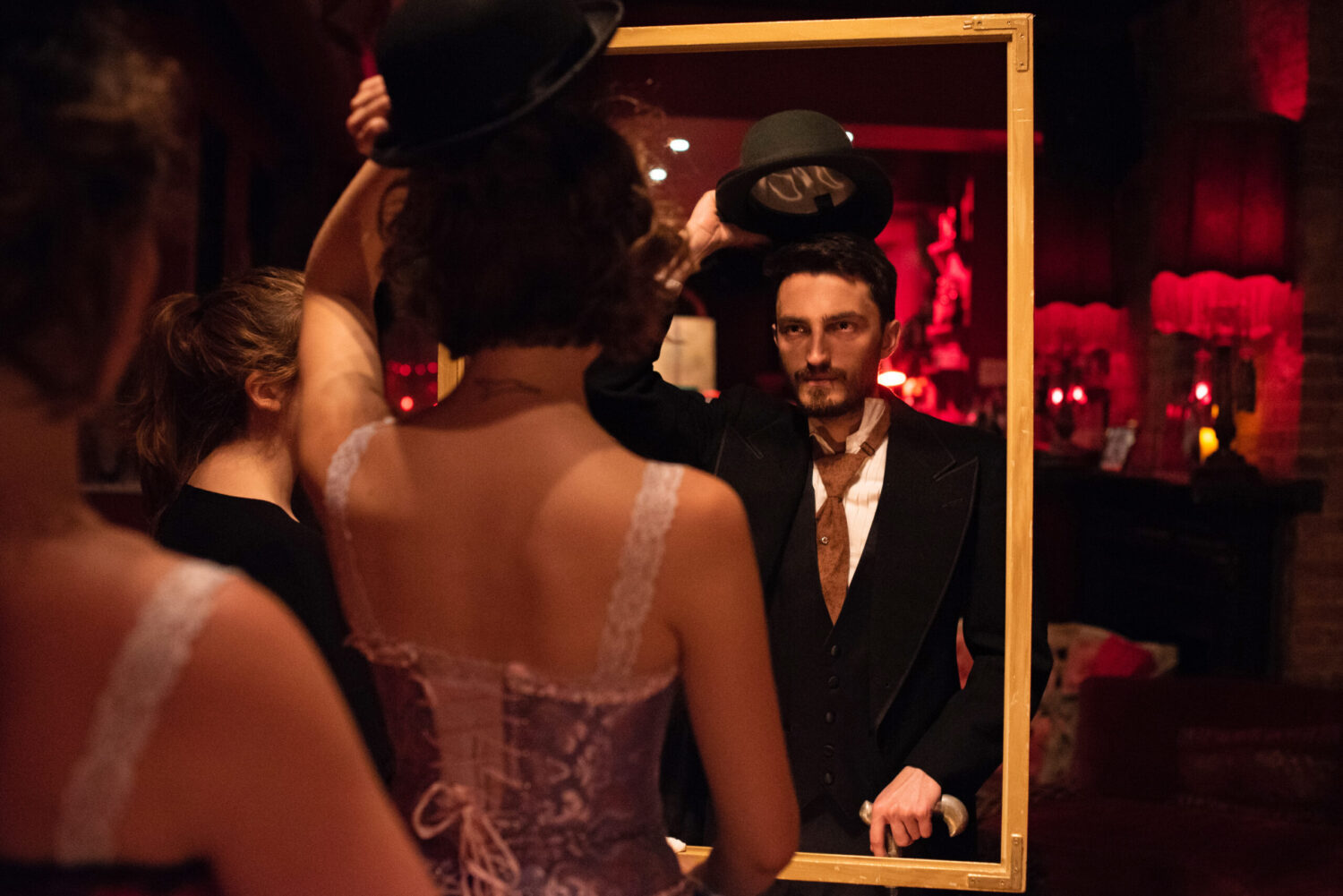
Daniel George as Toulouse-Lautrec. Photo by Brandon Saloy of Mia Isabella Photography.
Toulouse-Lautrec suffered from a variety of physical and mental afflictions. Childhood injuries and genetic disease left him with severe disabilities, which were compounded in his adult life by alcoholism and syphilis (occupational hazards of being the in-house artist at Paris’ most lively cabarets). The Bated Breath show deals with these issues, that’s where the unmaking comes in, and it’s interesting to think about Toulouse-Lautrec in the discourse of disability studies. But it misses the opportunity to go deeper, to ask questions about how the corporeal particularities of his life may have influenced his unique perspective, may have manifested in the sympathy and humor with which he depicted the marginalized subjects he painted? Compare Toulouse-Lautrec’s cabaret dancers to Degas’ ballerinas: one set of paintings challenges norms, the other enforces them. And I hate to say it, but Daniel George, who plays Toulouse-Lautrec, may be too conventionally handsome for the role. Toulouse-Lautrec and I share the unenviable height of 4’8” and let me tell you, it shapes your whole world.
With costumes by Gail Fresia and choreography by Tara O’Con, the show has a handmade, hardscrabble aesthetic that is appropriate for its subject matter. My guest that night said it reminded him of a drag show, and that’s exactly right. There was no gender-bending per se, but plenty of campy queerness. The most captivating performer in the show was Gloria Dei Filippone, who appears as one of the dancers that perform for, sleep with, and inspire the artist. The bright-eyed Dei Filippone brought an energy and intensity to her performance that was positively seductive. Everybody on stage, though, was working their butts off, and they were clearly having fun, as was everybody in the audience. You could tell because of the intimate staging; performed in the round, every audience member could see the face of every other audience member, and we were all smiling. Particularly rousing were the musical numbers by Nathan Leigh, all bawdy and raucous.
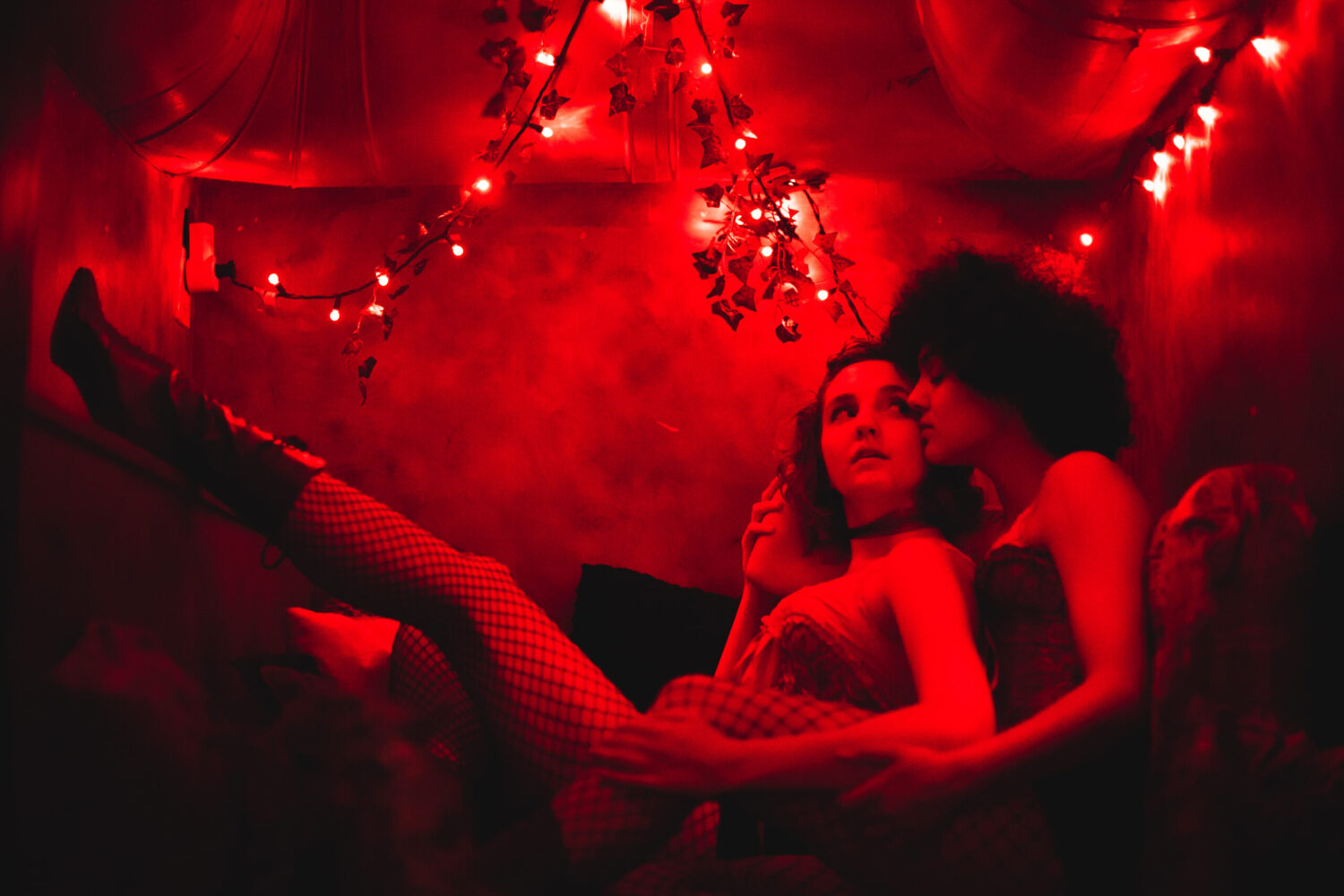
Kat Christensen and Glori Dei Filippone. Photo by Brandon Saloy of Mia Isabella Photography.
In fact, there were some audience members who competed for attention even with the cast. Sitting to my left were two women who looked barely old enough to order drinks. With long silky hair and low-cut tops, they divided their time between, on the one hand, whispering, preening and taking selfies and, on the other hand, watching and occasionally filming the show (#unmakingtoulouselautrec). They sat close together, their physical contact intimate but non-sexual. You could tell that for them, this show was just the first act of the night. They were on their way to some other bar or party, where they would tell the fawning men, “We just saw this random play about some artist!” And I found myself, like Toulouse-Lautrec, absolutely mesmerized by these women who so clearly delighted in their own bodies and sensuality. What a perfect subject for a show.
This post was written by the author in their personal capacity.The opinions expressed in this article are the author’s own and do not reflect the view of The Theatre Times, their staff or collaborators.
This post was written by Abigail Weil.
The views expressed here belong to the author and do not necessarily reflect our views and opinions.

